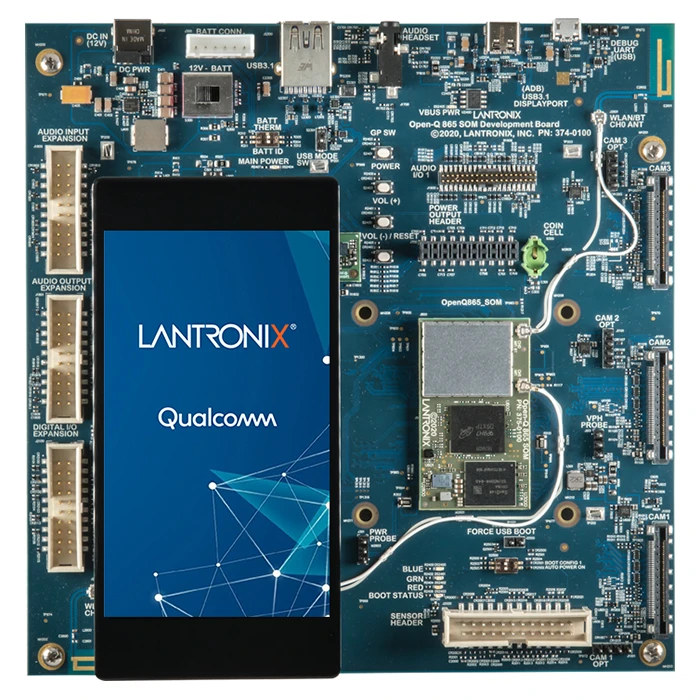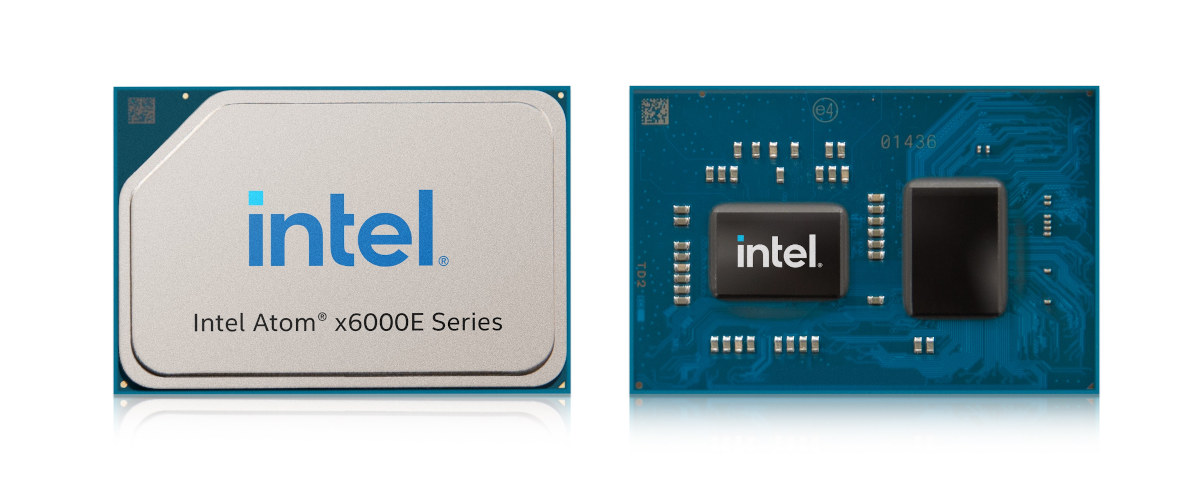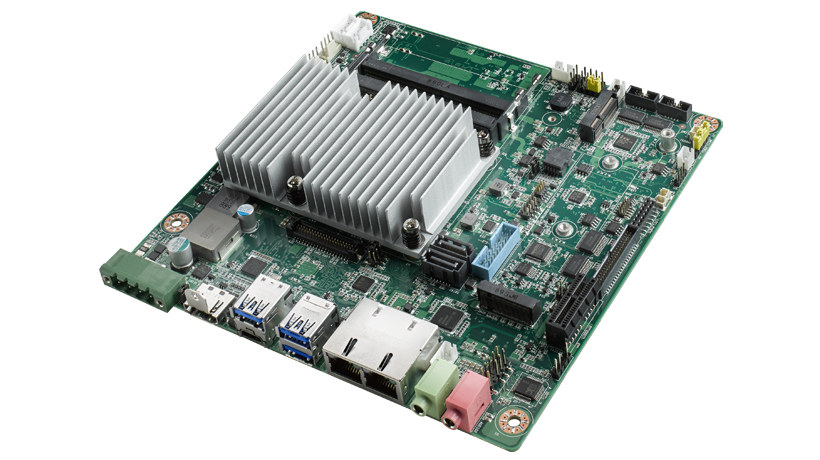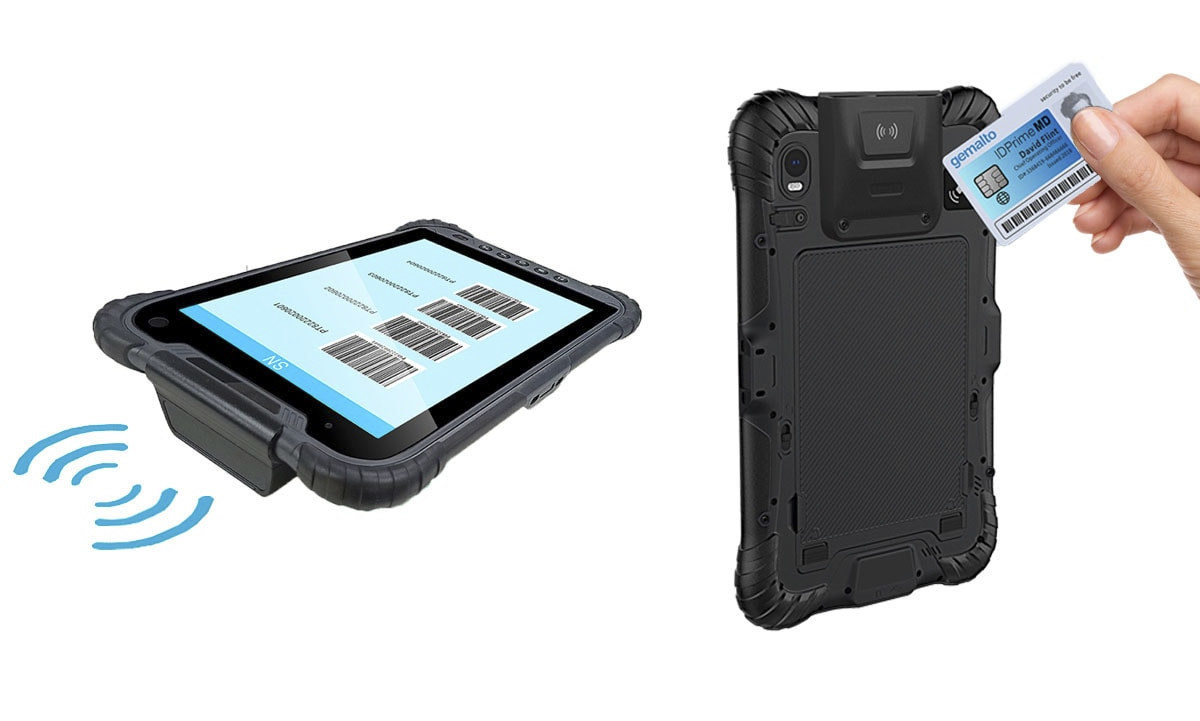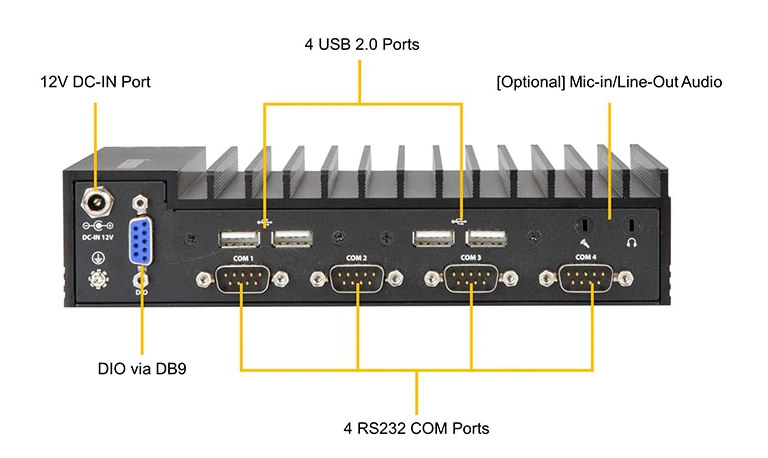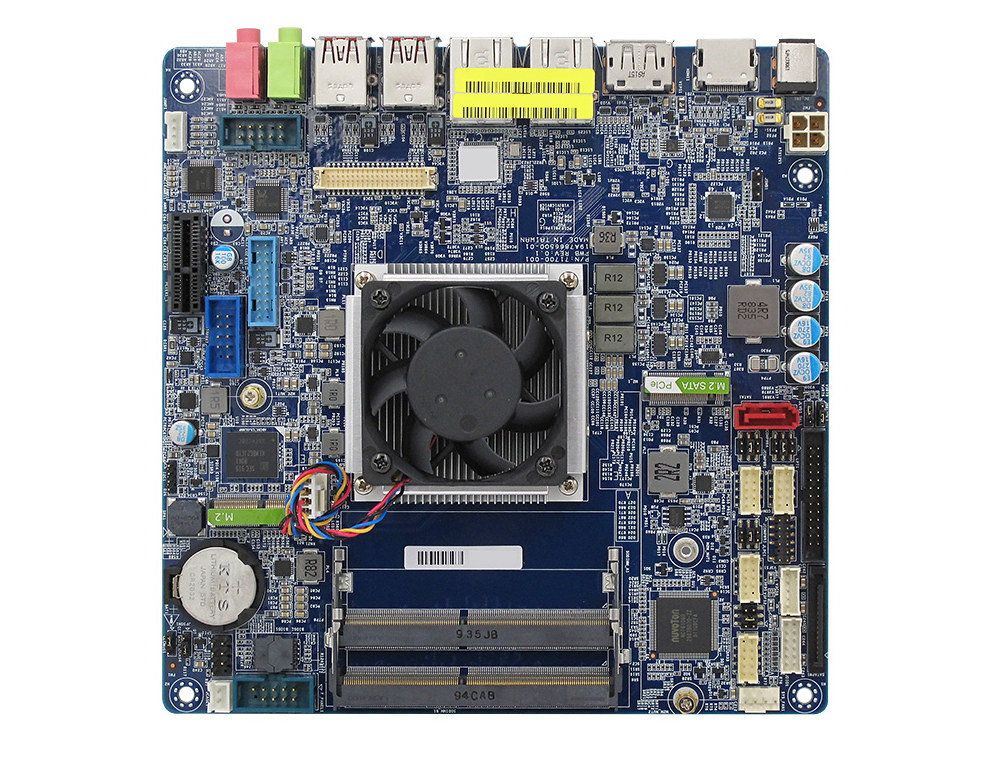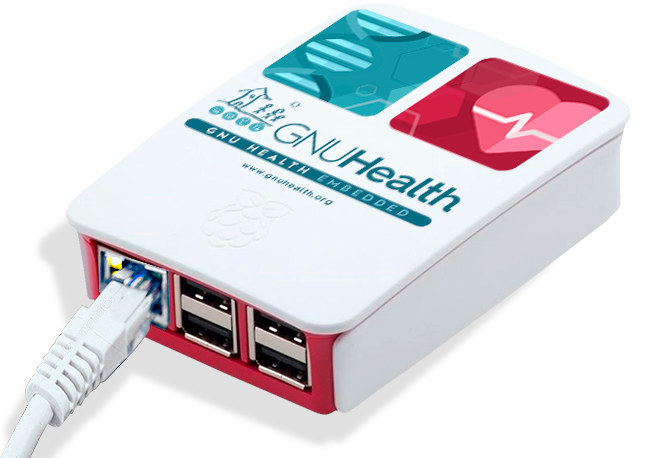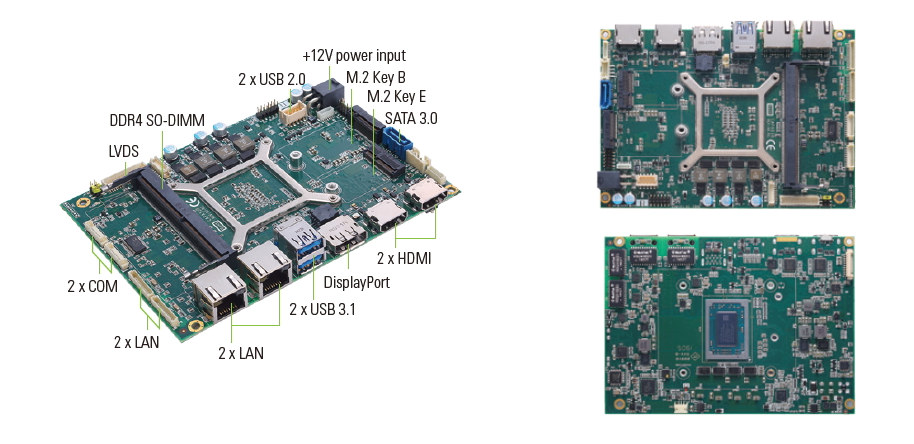Qualcomm Snapdragon XR2 (SXR2130P) is the latest and most powerful virtual & extended reality processor from the company and Facebook recently announced it would be found in their Oculus Quest 2 standalone VR headset. But it now looks like the processor will be used well beyond virtual reality applications as Lantronix has unveiled a Snapdragon XR2 SoM with Open-Q 865XR system-on-module designed for AI boxes, video conference systems, multi-camera systems, machine vision platforms, advanced high-resolution multi-display systems, medical imaging, and handheld data collectors. Open-Q 865XR SoM Open-Q 865XR SoM specifications: SoC – Qualcomm SXR2130P (Snapdragon XR2) Octa-core processor with 1x Kryo Gold prime @ 2.84 GHz + 3x Kryo Gold @ 2.42 GHz + 4x Kryo Silver @ 1.81 GHz Adreno 650 GPU @ up to 587 MHz Hexagon 698 DSP with quad Hexagon Vector eXtensions Spectra 480 Image Signal Processor Adreno 665 Video Processing unit for decode up to […]
Intel Unveils Atom x6000E Series, Celeron and Pentium Elkhart Lake IoT Edge Processors
We’ve been expecting Intel Elkhart Lake processors for more than a year, and the company has now officially announced the “IoT-enhanced processors” with a new Atom x6000E Series, as well as some Celeron and Pentium N/J parts. Last year, we thought Elkhart Lake would succeed Gemini lake, but the new 11th generation 10nm processors may not be found in many consumer devices, as they target IoT edge applications with additional artificial intelligence (AI), security, functional safety, and real-time capabilities. The company has announced a total of 12 Elkhart Lake processors with all but one featuring 10th Generation Intel UHD Graphics and divided into eight Atom x6000E series processors. and four Celeron/Pentium parts Intel further explains Elkhart Lake IoT edge processors deliver up to two times better 3D graphics compared to Pentium J4205 Apollo Lake processor, come with Intel Programmable Services Engine real-time offload engine with support for out-of-band and in-band […]
Whiskey Lake Thin Mini ITX SBC Features Eight USB Interfaces, Dual SATA, Dual GbE, and More
Advantech AIMB-233 thin mini-ITX SBC is equipped with a choice of 15W Intel Whiskey Lake processors, supporting up to 32GB RAM, and offering plenty of high speed I/Os include eight USB interfaces, two SATA III ports, dual Gigabit Ethernet, several PCIe & M.2 expansion slots, as well as triple display support, six COM ports, and more. The motherboard complies with the “thin mini-ITX” requirement of not exceeding 2.5cm in height, and Advantech expects the thin Mini-ITX SBC to be found in nursing carts, patient care systems, Human-Machine Interfaces (HMI), and mobile devices. AIMB-233 thin mini-ITX SBC specifications: SoC (One or the other) Intel Core i7-8665UE quad-core/octa-thread processor @ up to 1.7 / 4.4 GHz with Intel UHD Graphics 620 – 15W TDP Intel Core i5-8365UE quad-core/octa-thread processor @ up to 1.6 / 4.1 GHz with Intel UHD Graphics 620 – 15W TDP Intel Core i3-8145UE dual-core/quad-thread processor @ up to […]
Snapdragon 626 Powered Rugged Tablet Comes with NFC, RFID and Barcode Readers
Estone Technology has launched another rugged tablet with UA-80 IP-67 waterproof rated, and MIL-STD-810G compliant rugged Android tablet powered by a Qualcomm Snapdragon 626 mobile platform driving an 8″ capacitive touchscreen display. The tablet is equipped with up to 8GB RAM, up to 128GB storage, and comes with HF(NFC) and UHF RFID readers and an optional barcode reader for healthcare, construction, retail, oil and gas, and logistics use cases. Estone UA-80 tablet specifications: SoC – Qualcomm MSM8953 Pro (Snapdragon 626) octa core Cortex-A53 processor @ up to 2.2GHz with Adreno 506 GPU with support for OpenGL ES 3.1 + AEP System Memory – 4GB LPDDR3 (Option: 8GB LPDDR3) Storage – 32GB eMMC flash (Option: 64GB, 128GB) Display – 8″ sunlight-readable IPS LCD with 1200 x 800 resolution, 450 nit brightness, 10-point touch, and chemically hardened cover glass Audio – Built-In microphone and 8 Ohm/1W speaker, 3.5mm 4-pole audio jack with […]
Supermicro Launches SuperServer SYS-E100-9W-H Fanless Whiskey Lake Embedded Mini PC
US-based Supermicro is known for its server products, but the company’s latest SuperServer SYS-E100-9W-H fanless embedded mini PC targets other applications, specifically industrial automation, retail kiosks, smart medical devices, and digital signage. The mini PC is equipped with an Intel Core i7-8665UE Whiskey Lake Embedded processor coupled with up to 64GB DDR4 memory, and offers plenty of connectivity options with dual Gigabit Ethernet, eight USB ports, four serial ports, and dual video output with HDMI and DisplayPort.SuperServer SYS-E100-9W-H specification: SoC – Intel Core i7-8665UE quad-core/octa-thread Whiskey Lake Embedded processor @ 1.7 GHz (Base) / 4.4 GHz (Turbo) with Intel UHD Graphics 620; 15W TDP System Memory – 2x DIMM slots for up to 64GB DDR4-2400MHz (non-ECC) Storage – Support for M.2 NVMe/SATA SSD Video Output – HDMI and DisplayPort Audio – ALC 888S HD Audio codec, optional Mic-in/Line-Out Networking – Dual Gigabit Ethernet via Intel I210IT and Intel I219LM USB […]
BCM MX4305UE Industrial Mini-ITX Motherboard Features Intel Celeron 4305UE Processor
Yesterday, as I wrote about AAEON UP Xtreme SBC, I realized that while I had seen some other Intel Celeron 4305UE Whiskey Lake boards with 3.5-inch and Pico-ITX form factors, I’ve just found out an industrial mini-ITX motherboard from BCM Advanced Research equipped with the processor. Just like other similar industrial Whiskey Lake SBC’s, Intel Core i3/i5/i7 Whiskey Lake-U Embedded processors are offered as options/upgrades for BCM MX4305UE motherboard, and the company says the board is designed for power-sensitive IoT devices and embedded applications such as video wall control management system, point-of-sales systems (POS), kiosks, automated vending machines, panel PCs, digital signage, medical and gaming devices. BCM MX4305UE mini-ITX board specifications: SoC Default – Intel Celeron 4305UE dual-core Whiskey Lake processor @ 2.0 GHz (base, no turbo frequency) with Intel UHD Graphics 610; 15W TDP Options Intel Core i7-8665UE quad-core processor up to 4.40 GHz max – TDP: 15W Intel […]
GNU Health Embedded Open Source Health Platform Works on Raspberry Pi 3/4, and soon Olimex SBC’s
GNU Health (GH) is a free and open-source Health and Hospital Information System (HIS) that can manage the internal processes of a health institution, such as financial management, electronic medical records (EMR), stock & pharmacies or laboratories (LIMS). It is already used in various hospitals, health centers, and medical research facilities in various countries, most developing countries, across the world. The program would normally be installed on x86 servers running Linux or FreeBSD, but there’s also a version for Raspberry Pi 3 and 4 based on openSUSE called GNU Health Embedded, and work is being done to port the solution to Olimex OlinuXino SBC’s. Contrary to what the photo above implies, GNU Solidario does not sell the hardware pre-loaded with GNU Health Embedded, but you can download it for free from their servers, and if you want to support the project you could always make a donation. As I understand […]
AMD Ryzen Embedded V1605B/V1807B SBC Offers Four GbE Interfaces, Four Video Outputs
We’ve written about several AMD Ryzen Embedded V1000 SBCs and many of them fully leverage the processor multimedia capabilities with support for four 4K displays, but Axiomtek CAPA13R 3.5″ Embedded SBC adds an extra twist by also offering four Gigabit Ethernet ports. The board is equipped with either Ryzen Embedded V1807B or V1605B, up to 16GB RAM, and offers two M.2 sockets for storage and connectivity. Four independent display support is achieved through a mix of three types of video output including two HDMI ports, one DisplayPort, and one LVDS connector. Axiomtek CAPA13R V1605B/V1807B SBC specifications: SoC – AMD Ryzen Embedded V1807B ( 35-54W) or V1605B (12-25W) quad-core processor with Radeon Vega 8 graphics System Memory – 1 x 260-pin SO-DIMM socket for up to 16GB DDR4-2400 (V1605B), 16GB DDR4-3200 (V1807) Storage – SATA 3.0 port (6Gbps), support for M.2 SATA/NVMe SSD in 22x42mm or 30x42mm form factor (Key B […]


